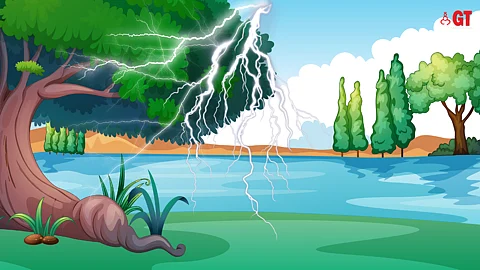

Goa’s public posture of not sharing water from the River Mhadei with Maharashtra and Karnataka has always been based on a doom’s day scenario. That is, the river will dry up if the two neighbouring states are allowed to divert its water.
Goa’s environment will be adversely affected. River navigation will be disrupted. Ingress of salty sea water into the river will completely destroy the fragile ecosystem. And so on and so forth.
What nobody tells us is how much water flows down the river. And how much is being diverted?
At the hearings of the Mhadei Water Disputes Tribunal, several experts gave their studied opinion of the total flow of water in the river. And guess what? Each one came up with a different figure, even though they all relied on the same data.
This caused the Tribunal to note, “The Tribunal is shocked and baffled to find that instead of reaching the same estimation of yield as arrived by the Central Water Commission, all witnesses (read experts) have given different figures of the yield of the Mhadei basin”.
The Goa expert Chetan Pandit reduced the value of discharge observed at the Ganjim site by 19%. A K Gosain (Karnataka) considered the data for a longer period. A K Bajaj, for Karnataka, adopted the report of Gosain without making any in-depth study.
S N Huddar (Maharashtra) adopted the figure mentioned by the CWC but added the input from the Tillary basin (that is how his estimation is the highest). S T Nadkarni worked out the yield for various sub-basins of the river.
How did this happen? The answer is simple. The experts were hired by various states, and each tailored his report to suit the case of the respective state. This in turn made them “paid experts”.
The Tribunal in its order noted that after the oath was administered, each expert was informed that he was an officer of the Tribunal, and hence he should do his best to arrive at a true and correct figure of water availability in the Mhadei.
The Tribunal noted, “The tribunal notices with pain that all the expert witnesses have failed to discharge their duties to assist the Tribunal in arriving at a correct figure of the yield of the Mhadei…,” and added, “It is well to remember that all expert witnesses are remunerated ones”.
If the conclusions of the experts are considered, the quantum of water in the Mhadei is as follows. Maharashtra — 208 tmc, Karnataka — between 202 and 206 tmc, Goa — between 145 and 154 tmc.
The conclusions are clear. The experts of Maharashtra and Karnataka showed larger yields to claim a larger share of the water, while Goa showed a much lower yield to buttress its case for not sharing even a drop of water.
This scenario forced the Tribunal to make an assessment of its own after considering all existing data and the arguments of all states. And it came to the conclusion that the quantum of water flowing in the Mhadei at 75% dependability is 188 tmc.
Given this scenario of conflict and lack of proper resolution, the Tribunal did not go into the process of complete sharing of the 188 tmc. Instead is allocated water project-wise. So Karnataka got permission to divert 3.9 tmc, Maharashtra was allowed to claim 0.56 tmc and by default, the remaining 183 tmc was allowed to flow into Goa.
So why is Goa crying hoarse when it got 97% of the water flowing in the Mhadei? And how will the diversion of 3% of the water dry up the river and undermine the environment? These are questions that all political parties in Goa and the government should ask themselves before burdening us with press conferences.